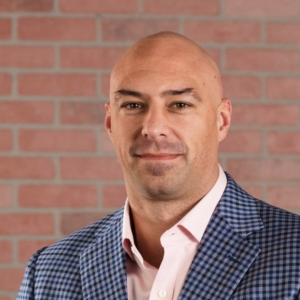Minimizing Owning and Operating Costs
Founder Ron Slee writes about another way to increase our profitability in business: minimizing our owning and operating costs.
The pressure is on everyone these days to be more mindful of costs. Inflation has provoked a lot of concern relative to the operating profitability of many businesses. Interest rates are in a serious phase of increases. Wages have changed very significantly. There is a lot going on.
It is well known that Product Support has as two of their major goals to assist customers in reducing owning and operating costs and protecting the resale value. It has also been known for a long time that maintenance is a key to this equation. However, we have many varied views on what maintenance truly is for capital equipment.
I remember attending a homeowners meeting a number of years back where the association had contracted with a professional engineering firm to provide an assessment on the condition of the assets we had. We paid a handsome sum for their report which they presented to the owners at a meeting. It was a very serious report pointing out actions that needed to be taken. After the professionals sat down the elected board decided to take no action. I stood and asked a question of the board as to why this report was being shelved with no action. They said that they didn’t agree with the report. As a follow up I asked what credentials the board had to make that determination. They said they had no credentials in that area. They then asked why I asked the question. I told them that to spend a large amount of money on an expert’s assessment and then ignore it was not very businesslike. They asked with incredulity why I thought it should be run as a business. There is the issue for all of us.
Equipment will last longer and cost less to operate if the recommendations from the manufacturer published in the owner’s and operator’s manuals are followed. It is that simple.
Yet there are varying opinions as to what maintenance really is required. Many people believe that simply changing lubricants and replacing parts is sufficient. That is like the board I noted above. There is no evidence to support that position.
Contractors everywhere are under serious cost pressures as noted. They need to reduce costs wherever they can. The majority of their operating budget is related to the costs of running their equipment.
Let’s look at this objectively.
Every piece of capital equipment has a maximum potential lifespan. That is true with everything working as designed. With abuse or neglect that life span is reduced. That seems obvious to me. The “if it isn’t broken don’t fix it” adage still prevails in the minds of many people. So, we are still challenged by many that preventative maintenance is a waste of money. Yet it seems obvious to me, that if we can prolong the life of a piece of equipment, that will reduce the overall cost of the machine. The other thing that is significant in this equation is unplanned downtime.
Managing downtime is like many other aspects in our lives. Like our personal budget. It is going to be an issue sooner or later. You can either plan for it or just hope it doesn’t happen. More successful fleet managers plan for downtime in their budgets. Another truth that has been pounded into my head is that the costs to repair a component before it fails is in the range of 50% of the cost of repair after failure. Think of all the costs associated with a down machine in the field. The phone calls, the dispatching of a field truck and technician to try and fix the problem in the field, at the job site. The transporting of the machine to a shop. It is not simply the cost of the work order to fix the machine, there are a lot of other expenses. The wasted time, the materials while delivering the products or service, and rearranging priorities on the job.
Preventative Maintenance which follows the manufacturers guidelines changes all of this. It streamlines the entire operation. The opposite situation is also true. It might prompt your customers to seek out alternative equipment in the future. Oh, and one more thing. I remember visiting a mine site. There was a machine parked at the edge of an open pit. It was not in an operating condition. It had been there for several weeks waiting for parts. Everyone saw the machine and asked the question “what’s going on there?” What do you think the impression of that machine and that supplier was for all that time? I would have moved the machine so that no one could see it.
By now I am sure that you are nodding your head in agreement with my point. Preventative Maintenance will help you reduce the owning and operating costs. So, what do you think? Will you get more aggressive in your use of preventative maintenance or not?
The Time is Now.





